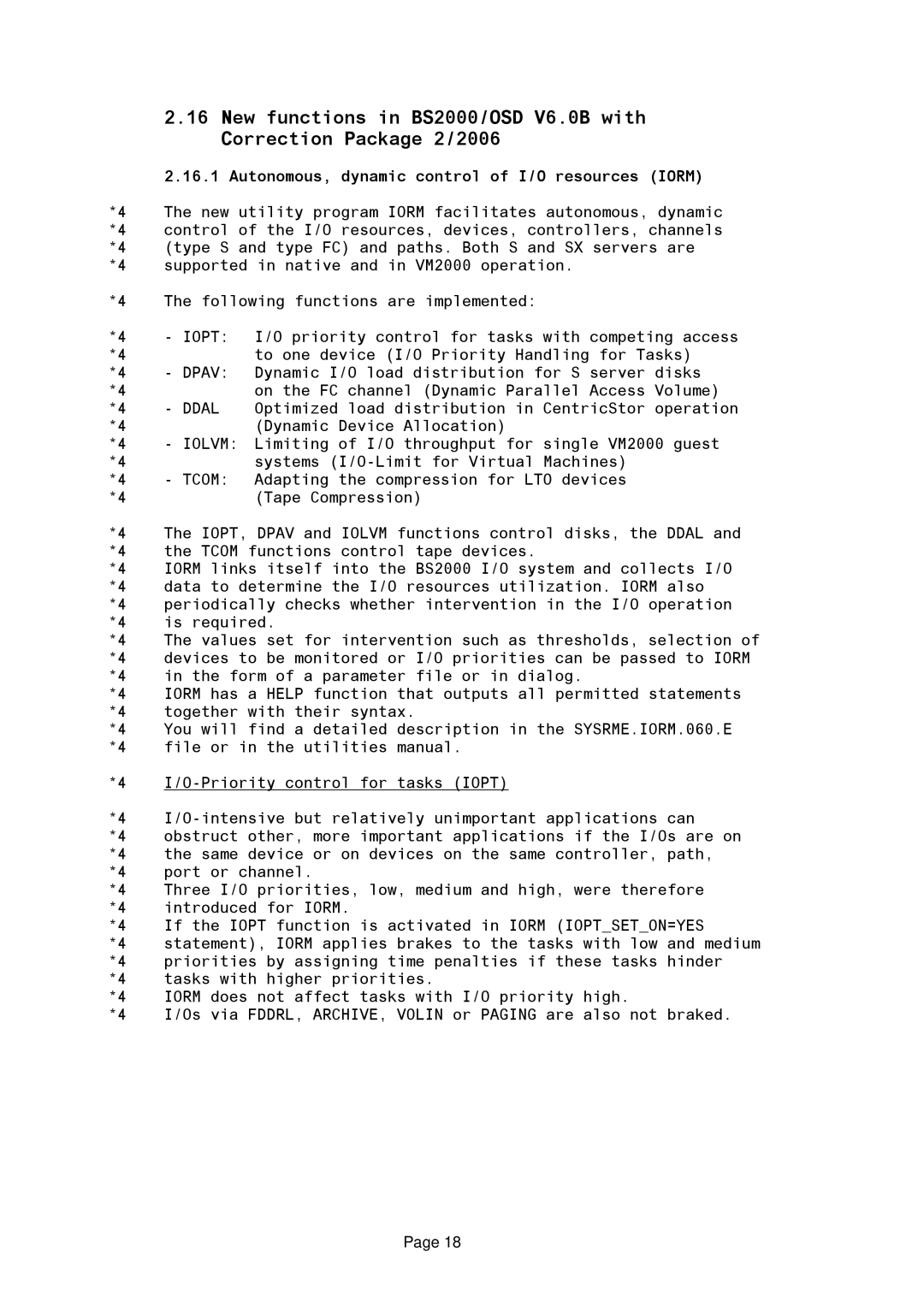| 2.16 New functions in BS2000/OSD V6.0B with | |
| Correction Package 2/2006 | |
| 2.16.1 Autonomous, dynamic control of I/O resources (IORM) | |
*4 | The new utility program IORM facilitates autonomous, dynamic | |
*4 | control of the I/O resources, devices, controllers, channels | |
*4 | (type S and type FC) and paths. Both S and SX servers are | |
*4 | supported in native and in VM2000 operation. | |
*4 | The following functions are implemented: | |
*4 | - IOPT: | I/O priority control for tasks with competing access |
*4 |
| to one device (I/O Priority Handling for Tasks) |
*4 | - DPAV: | Dynamic I/O load distribution for S server disks |
*4 |
| on the FC channel (Dynamic Parallel Access Volume) |
*4 | - DDAL | Optimized load distribution in CentricStor operation |
*4 |
| (Dynamic Device Allocation) |
*4 | - IOLVM: | Limiting of I/O throughput for single VM2000 guest |
*4 |
| systems |
*4 | - TCOM: | Adapting the compression for LTO devices |
*4 |
| (Tape Compression) |
*4 | The IOPT, DPAV and IOLVM functions control disks, the DDAL and | |
*4 | the TCOM functions control tape devices. | |
*4 | IORM links itself into the BS2000 I/O system and collects I/O | |
*4 | data to determine the I/O resources utilization. IORM also | |
*4 | periodically checks whether intervention in the I/O operation | |
*4 | is required. | |
*4 | The values set for intervention such as thresholds, selection of | |
*4 | devices to be monitored or I/O priorities can be passed to IORM | |
*4 | in the form of a parameter file or in dialog. | |
*4 | IORM has a HELP function that outputs all permitted statements | |
*4 | together with their syntax. | |
*4 | You will find a detailed description in the SYSRME.IORM.060.E | |
*4 | file or in the utilities manual. | |
*4 | ||
*4 | ||
*4 | obstruct other, more important applications if the I/Os are on | |
*4 | the same device or on devices on the same controller, path, | |
*4 | port or channel. | |
*4 | Three I/O priorities, low, medium and high, were therefore | |
*4 | introduced for IORM. | |
*4 | If the IOPT function is activated in IORM (IOPT_SET_ON=YES | |
*4 | statement), IORM applies brakes to the tasks with low and medium | |
*4 | priorities by assigning time penalties if these tasks hinder | |
*4 | tasks with higher priorities. | |
*4 | IORM does not affect tasks with I/O priority high. | |
*4 | I/Os via FDDRL, ARCHIVE, VOLIN or PAGING are also not braked. | |
Page 18
